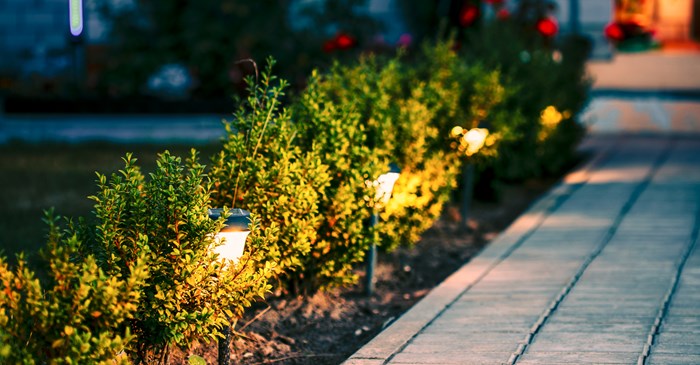As birds prepare to migrate, one thing we can do is make the skies a little safer to travel by making a few minor adjustments to their landscaping. Birds use stars and moonlight to help them navigate. However, bright lights can obscure birds' navigation systems and send them flying in circles. In the following, we’ll talk more about how and why birds travel by night, and what you can do to make your world a better place for our beloved songbirds.
Why do birds migrate at night?
Migrating after dark may seem counterintuitive. When you consider how songbirds move and where they spend their time, nighttime is the right time to travel.
- Songbirds that migrate spend little time exposed, out in the open. You’ll often find them sheltering under the protective cover of trees, shrubs, brush, and tall grasses. Migrating by night provides more cover against predators.
- A songbird typically has less-smooth, less-powerful flight patterns compared to other bird species, making nightfall more advantageous during migration.
- Winds are usually calmer by night so they don’t have to burn as much energy traveling against headwinds.
- Lower temperatures help them shed excess heat.
The daytime hours give birds time to rest and load up on calories, especially if they find a well-stocked bird feeder.
How do lights affect songbird migration?
Artificial lights can throw birds off their routes, and keep them from reaching their destination, particularly when low cloud cover amplifies the illumination.
The best-known example is the 9/11 tribute in New York City, where two columns of light pointed toward the sky attracting hundreds of migrating birds. They spend their travel circling this column — not unlike moths to a lamp. Thanks to bright lighting, birds have also been known to circle buildings, causing them to lose precious time for travel.
In response to these concerns, several U.S. towns, cities, and states implemented night sky programs to make things friendlier to traveling bird species.
Doing your part to create bird-friendly lighting
There’s no need to stumble in the dark to achieve bird-friendly lighting at home and in your neighborhood. Actually, it’s so easy to pull it off!
- Use shielded light fixtures. Upward pointing light fixtures not only misdirect birds but also create light pollution, which obscures the stars. Instead, use shielded fixtures that aim light toward the walkway and driveway. Strip lighting and downward-facing landscaping lights can also be helpful. Look for the International Dark-Sky Association’s Fixture Seal of Approval.
- Go for a warm glow: Use light bulbs that emit warm lighting in the pink-orange color spectrum. Low-color temperature lighting can obscure the stars and interfere with a bird’s ability to navigate.
- Limit exposure: Use timers or motion detector activation to limit outdoor lighting to only when needed.
- Lights out indoors. To reduce window collisions, pull the blinds after dark and enforce a lights-out policy in rooms that aren’t being used. When possible, using task lighting versus overhead lights also minimizes the glare.
- Observe Migratory Bird Day, celebrated on the second Saturday in May and October. Show off your lighting upgrades on social media so your friends and neighbors can be inspired to make a difference.
- Get involved: Reach out to your neighborhood homeowner’s association, city council, developers, and others who make decisions about lighting. Tell them the benefits of dark-sky lighting and petition for a change!
Support your local birds
During migration season, give birds an energy break by keeping your feeders well-stocked. Lyric Fruit & Nut High Energy Mix contains energy-dense seeds and nuts to fuel birds for the journey.
